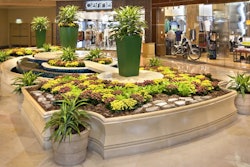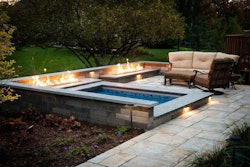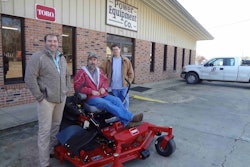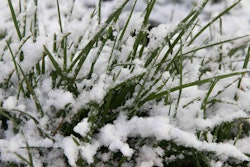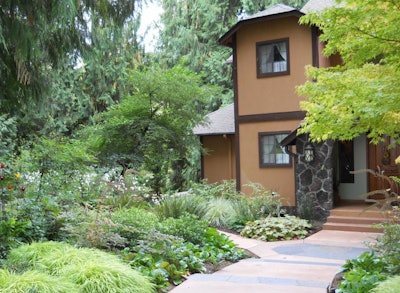 One form of sustainability is choosing to use native plants that attract pollinators.
One form of sustainability is choosing to use native plants that attract pollinators.Photo: Seasons Garden Design LLC
If you want to stay ahead of the curve it’s always a good idea to keep an eye on the popular landscaping trends. Not all of them may apply to your business, but they may show where you can add to or adjust some of your services.
Here are five trends you can expect to see in 2017:
Sustainability
Yes, that ever-present buzzword is going to be a major concern for clients this year. While customers are very interested in sustainability, it will be up to you to decide how to be sustainable this year.
“Sustainability has become a bit overused as a word, so to get people’s attention I think we need to break it into components – for example, ‘saving bees,’ ‘creating diversity,’ or using the word ‘ecology’ or ‘ecological,’ said Vanessa Gardner Nagel, owner of Seasons Garden Design LLC in Vancouver, Washington. “Being more specific about what sustainability actually is works better than just a difficult-to-define buzzword.”
At The LaurelRock Company based in Wilton, Connecticut, some of the recent sustainable projects they have seen an increase in include turf healthcare, vegetable gardens, orchards, green roofs, smart irrigation controllers and honeybees. Peter Kehoe, landscape maintenance and enhancements division manager for The LaurelRock Company, advises landscapers to partner with experts in bee keeping, vegetable gardening and green roofs.
“Providing the client with a known expert in these areas help the landscaper transition into these areas that have been unfamiliar to them in the past,” Kehoe said. “Today’s landscaper needs to familiarize themselves in these areas moving forward. More and more clients are asking about these services.”
Another option landscapers have is to look at cleaner fuels, such as propane, or opting to use battery-powered equipment in certain situations to reduce their use of gas. Surveys have shown that consumers place a premium on eco-friendly companies and are willing to pay a higher price as well.
Redesigned lawns
In the mindset of sustainability, the traditional lawn is now being seriously reconsidered. While some like Jan Johnsen, co-principal and owner of Johnsen Landscapes & Pools in Mount Kisco, New York, believe the traditional lawn has overstayed its welcome, others feel that a balance can be struck.
“Lawns are the ecosystem that bring people together,” said Rebecca McMackin, director of horticulture for the Brooklyn Bridge Park in New York. “They welcome people into the landscape. I’m not a hardliner who is anti-lawn but two elements that desperately need to change are the vast expanses of lawn no one goes on and how lawns are managed.”
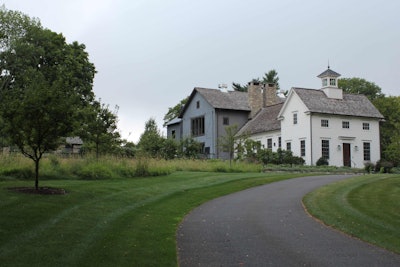 Here is an example of one of The LaurelRock Company’s properties that are maintained with a sustainable turf health care program.
Here is an example of one of The LaurelRock Company’s properties that are maintained with a sustainable turf health care program.Photo: The LaurelRock Company
McMackin argues that maintaining lawns with synthetic chemicals is toxic and unnecessary, citing that the lawns at the Brooklyn Bridge Park are taken care of organically and handle around 6,000 visitors on the grass every day yet still have that lush, green look.
For this shift to take place, it is stressed that an education phase must occur for both landscapers and their customers.
“All of us (landscapers and landscape designers) have a responsibility to educate our clients about the consequences of what we do with clients’ gardens,” Gardner Nagel said. “It means being well-educated about what it means to be sustainable to do that. When I talk with clients – often about their lawn – I give them information they often do not hear from anyone else so they can make an educated decision. I don’t just say ‘You shouldn’t do this’ I tell them why they shouldn’t do it.”
Aside from shifting to more organic maintenance practices, lawn-like alternatives are also being selected to create a less demanding expanse of green that can still be enjoyed.
“There are many groundcovers and other types of grass seed that are combined with complementary plants that create either a beautiful-looking sea of green or can create a tough green surface for children to play on,” Gardner Nagel said.
Natural materials
 Natural stone can be used in a number of ways. Jan Johnsen outlines the methods in her book The Spirit of Stone: 101 Practical & Creative Stonescaping Ideas for Your Garden.
Natural stone can be used in a number of ways. Jan Johnsen outlines the methods in her book The Spirit of Stone: 101 Practical & Creative Stonescaping Ideas for Your Garden.Photo: Jan Johnsen
Outdoor living spaces have become a given for the landscape, but the materials used to construct them often varies. For 2017, customers are straying from man-made materials and looking for natural substances for an organic look in garden.
“Natural stone is a great option,” Johnsen said. “It’s sustainable in the truest sense. It’s durable, weatherproof and adds an earthy authenticity to the scene.”
This focus on natural materials is because of the promise of quality it brings. Retaining walls, outdoor fireplaces and outdoor kitchens built with natural stone give the appearance of being there from the beginning and lend a sturdy feel to the space.
By repurposing elements found on the property, such as rocks and logs into a pergola or seating, landscaping companies can cut down on waste while saving the customer some money.
“There is also a greater interest in staying away from man-made materials and using local, natural materials like stone and recycled materials like composted wood from the lumber industry,” Gardner Nagle said. “But harvesting natural materials can have its own consequences. Mining stone can leave scars on the land, so we must do it with a ‘lighter touch’ and in a way that doesn’t require long-distance transport.”
Dwarf plant varieties
As property sizes are continually shrinking, large trees and massive shrubbery are being replaced by more suitable dwarf varieties. According to Monrovia, landscapers can expect to see many more compact versions of their favorites now that breeders have caught up to the trend.
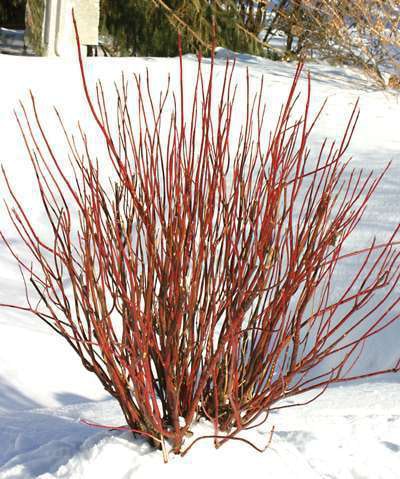 Unlike most Cornus that reach 8 to 10 feet tall Arctic Fire grows only half that height.
Unlike most Cornus that reach 8 to 10 feet tall Arctic Fire grows only half that height.Photo: Proven Winners
“Miniature conifers are some of my favorites (like Cryptomeria ‘Little Diamond’) because they only grow about 1-2 inch per year,” Gardner Nagel said. “Also dwarf cultivars of trees, perennials, grasses, and shrubs like these: Cornus ‘Arctic Fire,’ Buxus x ‘Glencoe,’ Callistemon citrinus ‘Little John,’ Miscanthus sinensis ‘Yakushima,’ Lagerstroemia Plum Magic™, Eupatorium dubium ‘Little Joe’ are wonderful for small gardens.”
Some of Johnsen’s favorite dwarf varieties to use include hostas, hellabores, and evergreens.
“Hostas are known as large leaf plants, but small hostas can thrive in shady areas where other plants can’t,” she said.
McMackin enjoys using diminutive plants like phlox to fill in spaces around larger plant material because of the natural look it creates.
Edible gardening
According to the National Gardening Association, one in three households are now growing their own food and this trend is not showing signs of diminishing.
Now as edible gardening becomes more mainstream, landscapers can expect to see more blended gardens, instead of keeping ornamentals and edibles strictly apart.
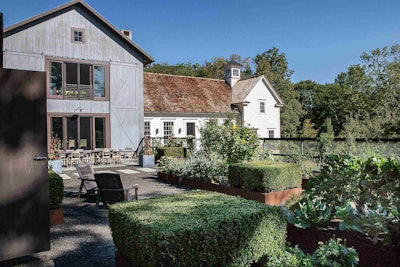 LaurelRock’s Estate Gardener maintains the sustainable garden on a weekly basis and keeps a diary of vegetable varieties, bed rotations, successes and challenges, and a list of the client’s preferences throughout the season.
LaurelRock’s Estate Gardener maintains the sustainable garden on a weekly basis and keeps a diary of vegetable varieties, bed rotations, successes and challenges, and a list of the client’s preferences throughout the season.Photo: The LaurelRock Company
“I think it’s great people are connecting with their landscapes,” McMackin said. “It’s great that it can be both beautiful and practical.”
Between vegetables, fruits, and herbs, it’s a good idea to suggest herbs to curious customers first as they are fast-growing and take up minimal space.
“There is a very strong subgroup of people who love their herbs,” Johnsen said. “More landscapers will look to herbs because they are deer resistant.”
For those who still don’t a lot of garden space but want to grow vegetables, dwarf cultivars of tomatoes, beans, peas, and cucumbers are all available so property size is no longer an issue.
“It seems as though a lot of clients want vegetables on their property of some sort,” Kehoe said. “Even the clients that don’t put a vegetable garden on their property are incorporating herbs into their decorative pot displays during the growing season. I think this will continue to get stronger.”

